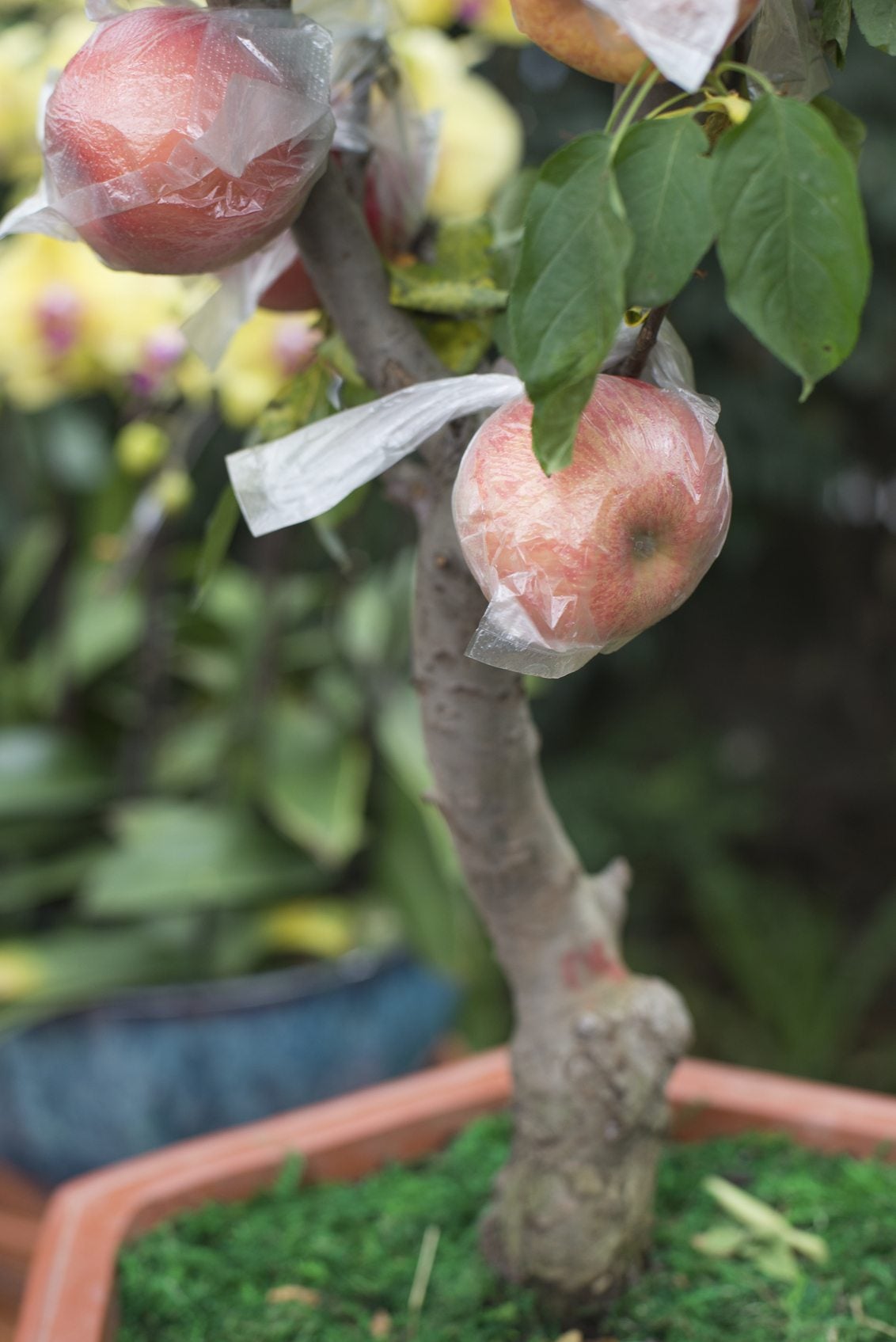Container Grown Apple Trees: How To Grow An Apple Tree In A Pot

The old adage “an apple a day keeps the doctor away” has more than a grain of truth to it. We know, or should know, that we should be adding more fruits and vegetables into our diets. It’s nice to be able to grow your own apple tree, but not everyone has the space for an orchard.
What if you were to start small, say by growing an apple tree in a pot? Can you grow apple trees in containers? Yes, indeed! Keep reading to find out how to grow an apple tree in a pot.
Before Planting Apples in Containers
There are a couple of things to consider before planting apples in containers. First of all, choose your cultivar. This sounds easy, just pick the variety of apple that you like best, right? Nope. Most nurseries will only carry trees that grow well in your area, but if you wish to purchase your tree online or from a catalog, you may not be getting one that will do well in your region.
Also, all apple trees need a certain number of “chill hours.” In other words, they need a minimum of time where the temps are under a certain amount - basically, a set amount of time that the tree needs to stay dormant. Pollination of apple trees is another consideration.
Some apple trees need another apple tree nearby to cross-pollinate with. If you have a truly small space and no room for two or more trees, you need to find a self-fertile variety. Keep in mind, though, that even self-fertile trees will produce a lot more fruit if they're cross-pollinated.
If you have enough space for two trees, be sure you are planting two varieties that bloom around the same time so they can pollinate one another. Also, just because an apple tree is labeled dwarf doesn’t necessarily mean it's a suitable container grown apple tree.
The rootstock that the tree is grafted onto will determine the eventual size. So what you are looking for is a label referring to the rootstock. This system is a more reliable method for determining if the tree will do well in a container. Look for a tree that is grafted onto P-22, M-27, M-9, or M-26 rootstock.
Gardening tips, videos, info and more delivered right to your inbox!
Sign up for the Gardening Know How newsletter today and receive a free copy of our e-book "How to Grow Delicious Tomatoes".
Next, consider container size. They are measured by volume or diameter, so it’s sometimes hard to pinpoint exactly what size you need. For your first year apple baby, look for a pot that is either 18-22 inches (46-56 cm.) across or one with a volume of 10-15 gallons (38-57 L.).
Yes, you can grow apple trees in smaller containers, but if you are in doubt, bigger is better than smaller. Whatever the size, be sure it has drainage holes. Get a wheeled base to put the pot on so you can easily move the tree around.
How to Grow an Apple Tree in a Pot
You can use potting soil or a mix of compost and regular garden soil to plant your container grown apple trees. Place some gravel or broken clay pot shards at the bottom of the container to facilitate drainage prior to planting the tree. If you have a bare root tree, trim the roots so they’ll fit in the container easily.
If the tree came in a nursery pot, check to see if the tree is root bound. If so, loosen the roots up and trim them to fit in the pot. Fill the bottom of the pot with soil atop the gravel and situate the tree so the graft union (the bulge towards the bottom of the trunk where the tree was grafted) is level with the lip of the pot. Fill in around the tree until the dirt is 2 inches (5 cm.) below the lip of the pot.
Stake the tree to give it some support. If you want, mulch on top of the soil to aid in moisture retention. Cut the newly planted apple back by 1/3 and water the tree well until water runs from the holes in the pot. Feed the plant during its growing season, especially since some nutrients run out of the drainage holes.
Water is very important when growing apple trees in pots, or anything in pots for that matter. Pots tend to dry out much faster than things grown in the garden proper. Water the tree at least twice a week, daily during hot months.
The smaller the container, the more often you need to water since the surface area is so small; it is difficult to get enough water in and to the roots. Drought stressed trees are open to insect and fungal infections, so keep an eye on the watering!

Amy Grant has been gardening for 30 years and writing for 15. A professional chef and caterer, Amy's area of expertise is culinary gardening.
-
 4 Superfast Composting Methods: Turn Waste Into Garden Gold In 30 Days Or Less
4 Superfast Composting Methods: Turn Waste Into Garden Gold In 30 Days Or LessTry the fastest composting methods to turbocharge your pile and transform kitchen scraps and garden waste into finished compost in just a few weeks.
By Mary Ellen Ellis
-
 Best Spider Plant Soil – Complete Soil Guide And Expert Tips For Keeping Plants Happy
Best Spider Plant Soil – Complete Soil Guide And Expert Tips For Keeping Plants HappySpider plants are fun and easy plants to grow, but what is the best soil for a spider plant? Selecting the right soil is important so they can thrive.
By Bonnie L. Grant